Courtly Love – Part Three
Eleanor of Aquitaine and Langue d’Oc
Legal and social attitudes to woman in the south gave them more freedom than their northern counterparts and, in the 12th century France, we find Eleanor of Aquitaine wielded as much power as men in times of peace. She was the granddaughter of William the Troubadour and, as such, was brought up in the courts of the troubadours, listening to the musical poetry of courtly love and speaking langue d’Oc. (See part two for explanation of langue d’Oc.)
At fifteen Eleanor was married to Louis VII, heir to the French throne. Louis did not understand langue d’Oc and his piety and life of prayer did not include the extravagance and splendour to which Eleanor was accustomed. Whilst Louis was madly in love with Eleanor, he did not have the kind of power and prestige that could capture her heart. Eventually Eleanor was able to get an annulment and she married Henry Plantagenet. Henry was a highly educated, cultured man who appreciated the arts and spoke langue d’Oc. This was a man who would indulge Eleanour’s love for the finer things.
Abbey of Fontevraud in France – burial place for Eleanor and Henry
Any lover worth his salt was said to be cortes, a word that means both courteous and courtly. Cortesia was a vital aspect of troubadour love. The lover’s cortesia consisted in not being miserly but not indulging in lavish exhibitions, not boasting but not necessarily keeping total secrecy, not being too forward but not hanging on every word, either. The term for this is menzura – the golden mean or ‘middle way.’
The more positive virtues admired in a lover were pretz and jovens. A lover was pretz when he had earned esteem through his love; the work is akin to prowess and implying accomplishment. Jovens embraced generosity and lightness of heart and was linked with the joy d’amour – the lover’s prize. Joy d’amour embraced a wide range of physical satisfaction to an almost mystical ecstasy. In its purest sense it was associated with the restraint and yearning an unswerving fidelity of fin’ amors – ‘fine love’ – the most refined and valued type of love.
That many stories have been written is testament to the strength of Courtly Love. The most famous of all is probably of Lancelot and Queen Guinevere and here it can be clearly seen the state of joy d’amour. Their love was in its purest form, this mystical adoration of a woman and only after their love was consummated, did it turn against them.
Another version of Courtly Love can be seen in Alfred Tennyson’s poem ‘The Lady of Shalott.’ This poem depicts the unrequited love of a maiden doomed to spend her days locked within a room held by magic. Her only way to watch life outside is to look through a mirror. It is there she sees our hero Lancelot riding by (he does have a lot to answer for, doesn’t he?) and she is so enchanted that she leaves the room to take a boat and sail to the castle so that she may gaze at her love again. But alas! As she leaves the safety of the room, the mirror cracks and the curse is set upon her. By the time she arrives at the castle, she lies dead within the boat. The castle folk gather upon the bridge to stare at her and Lancelot looks at the fair face never knowing her adoration of him was her undoing. Ah, such is courtly love.
In this 14th century example of a troubadour song it uses three voices. The tenor is repeated over and over while the other verses are sung. The idea of Courtly Love was for the lover to present himself as a loyal servant of the lady. If he obeyed her every wish, she may in time console him with love making. If she postponed this healing consolation too long, he might die and poets often used such a threat of death to exert pressure as a form of emotional blackmail – ‘you can commit your charms to me or commit murder by refusing me.’
MOTEUS
Lady I am one of those who willingly endures your wishes,
So long as I can endure,
But do not think I can endure it for long without dying,
Since you are so hard on me
As if you wanted to drive me away from you,
So I should never again see the great and true beauty
Of your gentle body which has such worth
That you are of all good women the best.
Alas! Thus I imagine my death.
But the pain I shall have to bear would be seet, if I could only hope
That before my death you let me see you again.
Lady, if ever my heart undertakes anything which may profit my heart,
It will come from you however far you may be,
For never without you, whom I love very loyally, nor without love, could I undertake it or know it.
TRIPLUM
Sweet noble heart, I am forbidden to ever see you again
Your fair sweet face which put me on the path oflove
But truly I do not know how I can expect not to hve to die soon.
And if I must abstain to give you pleasure,
Or else be untrue to you,
Then I would rather keep my loyalty
And according to your will – die,
If your heart wished it, than against your will
To receive complete joy by viewing your beauty.
TENOR
Sweet noble lady, pretty lady,
I am wounded by love
So that I am sad and pensive
And have no joy or mirth
For to you, my sweet companion,
I have thus given my heart.
Motetus the Poet
So now we have discussed the way to a woman’s heart (part one) the ideals of Courtly Love (part two) what exactly then, are the rules?
Here are all 31 of them!
1. Marriage is no real excuse for not loving.
2. He who is jealous cannot love.
3. No one can be bound by a double love.
4. It is well known that love is always increasing or decreasing.
5. That which a lover takes against the will of his beloved has no relish.
6. Boys do not love until they reach the age of maturity.
7. When one lover dies, a widowhood of two years is required of the survivor.
8. No one should be deprived of love without the very best of reasons.
9. No one can love unless he is propelled by the persuasion of love.
10. Love is always a stranger in the home of avarice.
11. It is not proper to love any woman whom one would be ashamed to seek to marry.
12. A true lover does not desire to embrace in love except his beloved.
13. When made public love rarely endures.
14. The easy attainment of love makes it of little value: difficulty of attainment makes it prized.
15. Every lover regularly turns pale in the presence of his beloved.
16. When a lover suddenly catches sight of his beloved, his heart palpitates.
17. A new love puts and old one to flight.
18. Good character alone makes any man worthy of love.
19. If love diminishes, it quickly fails and rarely revives.
20. A man in love is always apprehensive.
21. Real jealously always increases the feeling of love.
22. Jealousy increases when one suspects his beloved.
23. He whom the thought of love vexes, eats and sleeps very little.
24. Every act of a lover ends in the thought of his beloved.
25. A true lover considers nothing good except what he thinks will please his beloved.
26. Love can deny nothing to love.
27. A lover can never have enough of the solaces of his beloved.
28. A slight presumption causes a lover to suspect his beloved.
29. A man who is vexed by too much passion usually does not love.
30. A true lover is constantly and without intermission possessed by the thought of his beloved.
31. Nothing forbids one woman being loved by two men or one man by two women.
To say that the rules of Courtly Love are conflicting would be a fair statement. Rule 2 (he who is jealous cannot love) does seem to conflict with rule 21 (real jealously always increases the feeling of love). Rule 30 shows us that ‘a true lover is constantly and without intermission possessed by the thought of his beloved’ and yet if we are to believe the ideals, he cannot be seen to be doing this (he must be restrained in his conduct). The term ‘Menzura – the Golden mean’ or perhaps ‘middle way’ is the key to survival in Courtly Love – not too much and not too little. This too, perhaps depended upon the the individuals for what is too much for one lady, may not be enough for another!
Rule 31 states that ‘nothing forbids one woman being loved two men or one man by two women’ andyet clearly it is stated that there can be no duplicity of heart. This the, can only apply before the beloved has committed himself or herself to one of the admirers. Love had to be reciprocal and freely granted on both sides and yet it suggests elsewhere that it was not an equal relationship, the beloved was always regarded as the superior being.
That these conflicts exist is probably human nature and yet for a very long time these codes of conduct were used to express feelings of love outside the marriage, gained popularity in society and all in the name of … Courtly Love.
By Cathy T
 Category Winner of the Chanticleer’s Chatelaine award for Historical Romance for 2013
Category Winner of the Chanticleer’s Chatelaine award for Historical Romance for 2013

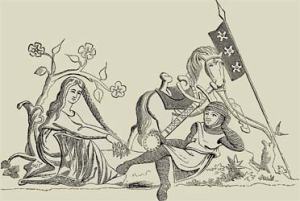
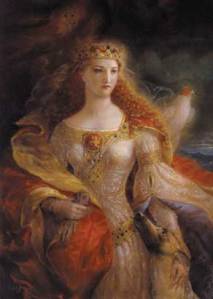


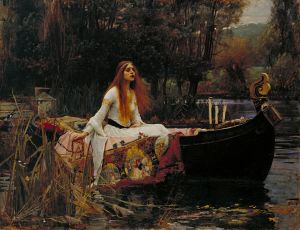
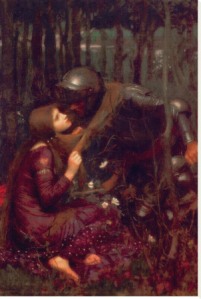
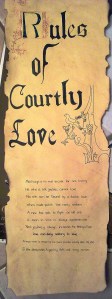
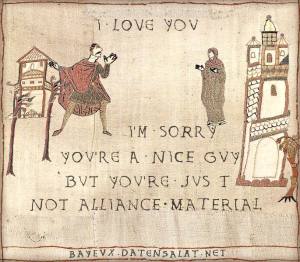

Informative article, totally what I needed.
Pretty nice post. I simply stumbled upon your blog and wanted to mention that I’ve really
enjoyed browsing your blog posts. After all I’ll be subscribing in your rss feed and I hope you write again soon!
Thanks very nice blog!
Hi there, I enjoy reading all of your article post.
I wanted to write a little comment to support you.
Your way of explaining the whole thing in this paragraph is truly nice,
all be capable of easily understand it, Thanks a lot.
Hello, just wanted to say, I loved this post. It was practical.
Keep on posting!
Hello, all the time i used to check webpage posts here in the early hours in the dawn, because i love to learn more and more.
Pingback: Orders of Knighthood – Fundamental or just plain fun? | Lions and Lilies